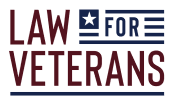Mortgage Help for Veteran Homeowners Who are Underwater on their Mortgage
When the housing market collapsed a few years ago, many people were left with homes and mortgages they could no longer afford. Veterans and active duty military families were hit especially hard. Military families move, on average, once every three years. Many were accustomed to purchasing a home when they arrived at a new assignment and then selling it when they were transferred to a new posting. Then, the balloon burst, and housing prices plummeted. Military families and veterans found themselves stuck with houses that were worth a fraction of the purchase price. They could not sell and they were underwater on the mortgage.
A few years have now passed since the crash, but in many markets, housing prices have not recovered. Arizona, California, Nevada and Florida are some of the states that were hardest hit by the crash, with 2012 being the low point in most of these markets. Housing prices are going up in Arizona, but they are still nowhere near the highs of 2005 and 2006. There are several reasons for the slow recovery. Builders have been slow to commit to new building projects. Buyers are nervous. The biggest reason, however, is that lenders have tightened their borrowing requirements so that only the most credit worthy borrower can obtain a home loan. That makes the pool of potential buyers a lot smaller than expected.
Veterans who are underwater or threatened by foreclosure need to know that they have some potential resources that are not available to the general public.
VA Guaranteed Loans
If the veteran used a VA loan to purchase the home, the VA can help cure the delinquency. Contact the VA at (877) 827-3702 to reach the nearest Loan Guarantee Office. The VA can provide a specialist to intervene with the lender and help explore all options to avoid foreclosure.
Veterans with VA Guaranteed Loans can also apply for an Interest Rate Reduction Refinance Loan (IRRRL). An IRRRL is basically a VA refinance option that reuses the veteran’s VA entitlement that was used for the initial loan. Generally, an IRRRL does not require an appraisal, credit information or underwriting, so it can be used to refinance in situations where the veteran owes more than the current value of the home.
The IRRRL must be in first position, so if there is a second mortgage on the home, the lender on the second must agree to subordinate its loan to the IRRRL. If it does not agree, the IRRRL option will not work. The new VA loan may be for a greater amount than the original loan, or it may be for less. There is a small funding fee for an IRRRL. It is usually 0.5 percent of the loan. The funding fee may be waived for veterans with a service connected disability or for the surviving spouse of a veteran who died in service or died from a service connected disability.
Conventional and Subprime Loans
The VA can also offer assistance with conventional and subprime loans. The veteran can call (877) 827-3702 to speak with a VA Loan Technician. However, be aware – unlike with the VA guaranteed home loan, with conventional loans, the VA does not have legal standing to intervene in the borrower’s dealings with the lender. The lender may respond positively to the VA’s attempts to negotiate, but the lender can also decide to ignore the VA’s efforts.
Veterans with a conventional or subprime loan may have another option. They may be able to refinance with a VA guaranteed home loan.
Take steps to explore your options and learn about your rights.
